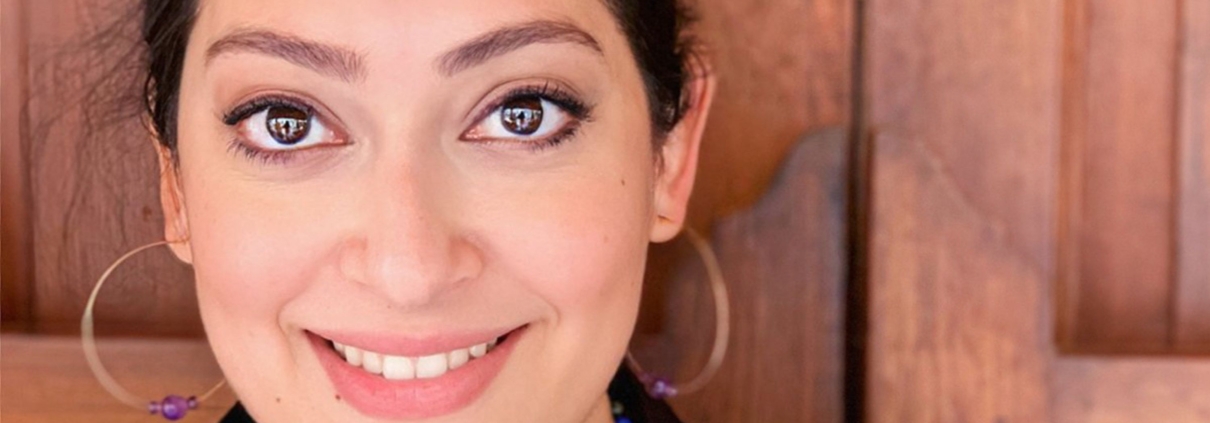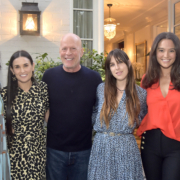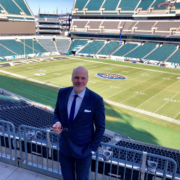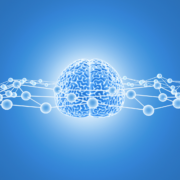Life without a mind’s eye
The first time I realized that the way I visualized was different from other people, I was 27 years old and taking part in a month-long yoga teacher training in south India.
Lying down on my mat in savasana, with my eyes closed, I listened intently to my teacher’s gentle voice guiding the class through its final meditation of the day. He urged us to visualize each limb relaxing, beginning at the feet and slowly working our way up the body, towards the neck and head. I tried to follow his instructions, but all I could perceive was a disconcerting darkness.
Despite repeated attempts at visualization and subsequently listening to various guided imagery exercises on Headspace, I’ve continued to meditate in pitch blackness. My mind’s eye has remained an impenetrable black void, unable to create the vibrant mental images that seem so natural to others.
And, as it turns out, I’m not the only one.
This lack of mental visual imagery is a cognitive condition known as aphantasia. Dr. Adam Zeman, professor of cognitive and behavioral neurology at the Univeristy of Exeter in the United Kingdom, has studied aphantasia extensively in the last two decades. “It’s a kind of absence of wakeful imagery, both deliberate and involuntary,” he said.
Zeman continued: “When most people think of an apple, for example, they will be able to call to mind the appearance of an apple. They’ll have an experience that is somewhat visual. But people who have aphantasia can’t do that; they are unable to summon imagery to mind in that kind of deliberate fashion.”
One of the first to describe the phenomenon of having no mind’s eye was Sir Francis Galton in 1880, who, during a statistical study on mental imagery, discovered that not everybody could conjure up mental images.
Fast forward to more than a century later and research now indicates that people with aphantasia, known as aphants, make up approximately three to four percent of the population — and Zeman has spoken to more than 17,000 of them.
Aphantasia doesn’t also just apply to visual imagery; Zeman explains that for some people, it can be a multisensory experience as well. Many people with aphantasia can also lack in other senses, including the mind’s ear and the mind’s fingertip.
The history of aphantasia
Today, a quick search for the term “aphantasia” on Facebook yields several active groups that offer varying levels of support and awareness for this relatively understudied cognitive phenomenon. The r/aphantasia subreddit alone has more than 57,000 members, making it one of Reddit’s largest communities.
But this wasn’t always the case.
While records of people having no mind’s eye date as far back as the 19th Century, research and interest in aphantasia are still relatively new. It wasn’t until the early aughts that pioneering researchers like Zeman started diving into why this cognitive condition even occurred.
After his original study on patient MX, who lost the ability to visualize after an angioplasty, was published in Discover magazine in 2010, Zeman began to receive messages from people with similar experiences. “We studied these folks by sending them questionnaires and found that they were reporting a consistent experience,” he says. “But there wasn’t a catchy name for it.” In 2015, Zeman coined the term aphantasia, basing it on the Greek word phantasia, which Aristotle used to describe imagination and the mind’s eye.
The VVIQ, or Vividness of Visual Imagery Questionnaire is one way to determine if you have aphantasia. First developed in 1973 by British psychologist David Marks, the test asks you to visualize 16 different scenes, rating each of them from one to five — one means you don’t see anything, you’re just thinking about it, while five means your visual imagery is as vivid as reality. “I think, on the whole, that test is pretty reliable,” says Zeman. “If you score one or the other extreme, that’s likely to be a meaningful answer.”
When the Mind’s Eye is Blank
Explaining what it’s like to have aphantasia is hard because it feels different for everyone. It’s also one of the main reasons why many aphants go most of their lives unaware they even have it. Facebook groups like the Aphantasia Support Group provide a wealth of information for aphants like elementary school teacher Stephanie Kawamoto and music composer Jamie Kowalski, who often comment and share their unique experiences and methods of coping with the condition.
Kawamoto was first made aware of her lack of visualization skills during an undergraduate class on teaching reading and listening skills in 2011. She recalls learning about how one of the characteristics of being a good reader lies in a person’s ability to visualize and perceive what’s going on in the text.
“I put my hand up and said that I was an avid reader but had never been able to visualize,” Kawamoto says. “And my professor joked that there must be something wrong with me.” A few years later, Kawamoto’s brother enrolled in the very same course, leading her to rehash her pointed classroom experience. “I got curious and ended up googling ‘inability to visualize,'” she says. “This led me to stumble upon aphantasia.”
Some aphants like Kowalski, who found out he had aphantasia in his 50s, have never felt that the condition affected their ability to work. “I had suspected something was different with me for a few years, but I couldn’t articulate it,” he explains. “Then I happened upon a YouTube video about aphantasia, and everything suddenly made sense.”
However, others like Kawamoto report that having a blank mind’s eye can sometimes hinder their ability to work. “Aphantasia mostly affects me at work when I have to organize things visually,” Kawamoto explains of her inability to make seating plans or organize the classroom just by looking at the space alone. “I have to either physically place things in my classroom to see if I like the setup, or I have to make models on paper or on the computer to try to figure out where things should go.”
Aphantasia and Art
Zeman notes that while there’s a slightly higher likelihood for aphants to work in STEM fields that don’t require the need for visualization, there are exceptions to the rule. He is quick to make it clear that people with aphantasia are far from unimaginative. “The lack of the ability to visualize does not imply a lack of the ability to be imaginative in creative and artistic ways,” he says.
Zeman’s research over the years has led to the surprising discovery of several highly successful and creative people that range from artists and authors to Pixar co-founder and Turing Award winner Ed Catmull, who realized he had a blind mind’s eye after being unable to visualize a simple sphere during a Tibetan meditation session.
J. Craig Venter, the scientist responsible for mapping the human genome, told 60 Minutes in 2010 that having aphantasia was his most extraordinary talent. “I have an unusual type of thinking. I have no visual memory whatsoever,” he said. “Everything is conceptual to me. So I think that’s part of it. I see things differently.”
Aphantasia and Memory
According to Zeman’s research, a small subgroup of people with aphantasia may also be autistic. It’s a phenomenon that mental health clinician and fellow aphant Monica Villar sees quite often in her practice. “Many of my autistic clients find it hard to create visual imagery. Some can, but they describe it as very faint outlines,” she says. “I know my mind’s eye has some spatial awareness in memory, but I really can’t create an image in my mind unless I try really hard.”
Casey E. Ovella Davis’ personal experience with aphantasia fuels her work as an archivist, oral historian, and memory worker, making her more attuned to the fragility of recollection. “We all have personal motivations and emotional attachments to different aspects of our past,” Davis says. “But we may not always have the ability to retain or access those memories as clearly as we would like.”
As founder and co-lead of the Autistic Voices Oral History Project, Davis aims to capture stories and lived experiences across the spectrum of the Autistic experience using video, audio, and text. “The fact I am an aphant and autistic has made me even more aware of the fleeting nature of our memories,” she explains. “While others may have vivid visual or sensory recall, I rely more on other forms of memory cues, such as facts and contextual information.”
Much like myself, Davis is also unable to relive past memories. It’s a condition known as Severely Deficient Autobiographical Memory (SDAM), and it’s often interlinked with aphantasia. Having a blank mind’s eye doesn’t just diminish the ability to visualize; it can also affect how the brain processes memory and imagination.
It’s not uncommon for aphants to have a less rich recollection of their personal past. “Many people with aphantasia also experience a reasonably consistent reduction in the richness of autobiographical memory,” says Zeman.
In fact, a 2022 study published in Cognition found a marked difference in how aphants recollect past experiences and imagine future ones. Participants that lacked visual imagery showed lowered capacities for remembering episodic memories and were also less likely to create future scenarios.
Despite having a blank mind’s eye, my visual aphantasia has never affected my ability to create art and write. Since I’m entirely unable to visualize, I rely on reference images when illustrating and painting. When it comes to writing, I use outlines to guide my stories; looking at reference pictures also helps me write better descriptions of food and travel sights.
It’s been six years since I first discovered my lack of mental visual imagery while lying on my yoga mat, and I’ve learned so much about how aphantasia has helped shape who I am today. It’s easier for me to be present, a characteristic that Zeman says he often observes in people with aphantasia as they tend to be less prone to emotions that are driven by imagery, such as regret, longing, and craving.
And, because aphantasia doesn’t keep me from being creative, I view the condition as more of a quirk in my psychological makeup rather than a disability — a fact that often surprises people who have the ability to visualize because they simply cannot imagine a life without an active mind’s eye.
Aphantasia might keep some of us from “seeing” in our minds, but it shows just how different and unique our brains can be, proving there’s no one-size-fits-all way to think or dream.
Christabel Lobo is a freelance writer and illustrator based between Washington, DC and the UAE. Her writing has been published in Time, Insider, Lonely Planet, AllRecipes, Verywell Fit, Healthline, webMD, and more. You can find her on Instagram @whereschristabel.









